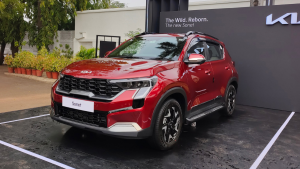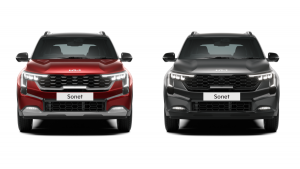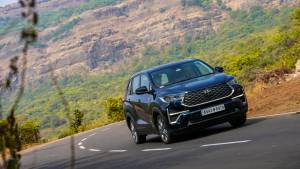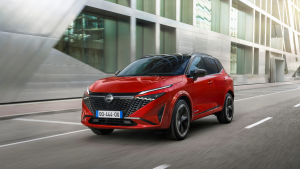2019 Kia Seltos first drive review
17 years ago I got married, and every day since then I've been constantly been discovering something new about my wife every few days, weeks or months. You can never ever say what you're going to discover the next week. You simply anticipate it and eventually turn a deaf ear to everything new that crops up. Yes, I heard you honey! Oh, is that right honey? Wow, yes I'm listening honey! That is matrimony. The husband never ever figures out his wife entirely throughout their married life and over time, his role is to simply nod in consent, appreciation, acknowledgement, understanding, etc. There are nods for every situation!
![]()
The Kia Seltos' story has been much like that. First, there were some teasers, then sketches, then cropped images, then some design workshops, then a camouflaged drive, then engine specifications, then a sit down inside the car, then a full reveal, then a short drive in a straight line. It has been a never-ending journey of discovery and eventually, you know what happened. Deaf ear syndrome!
So on this nth rotation of the Kia Seltos experience, we simply went through the motions yet again. You see, we did get to drive the Seltos in the real world but in very wet weather in Goa. And then a few weeks from now there is the price announcement, then a few weeks after that, there may be further announcements and then more plans that will lead to further interactions and announcements and meetings and whatnot. I can feel the deaf ear syndrome afflicting me again!
![]()
Except, the Seltos got my senses all alive and kicking, my ears perked up, my eyes flashed brightly and my breath came up short at times. The Seltos is exciting. It's hard to believe that this is an SUV based on the same platform as the Creta. It has been tweaked and brought more up to date, in essence, these two SUVs have the same roots but there on they are as different as chalk from cheese.
We got our hands on three variants of the Seltos, two of which we were already familiar with from the quick straight-line drive at Kia's manufacturing plant. Those would be the 1.4-litre petrol with the manual and dual-clutch automatic transmissions. The diesel 1.5-litre with the 6-speed automatic transmission (torque convertor) was the third variant we got to drive. However, none of these SUVs were driven in real-world conditions. So in a sense, there was a lot to discover.
![]()
First off, the manual and automatic Seltos with the 1.4-litre petrol. This free-revving engine is a turbocharged direct-injection petrol that displaces 1,353cc from a 4-cylinder layout. Max power is rated at 140PS developed at 6,000rpm, which is pretty close to the redline at 6,200rpm. Max torque from this engine is 242Nm available at as low as 1,500rpm all the way up to 3,200Nm. So in either manual or automatic configuration, the torque surge is linear and strong. However, in my opinion, I did enjoy the manual transmission a lot more. The 6-speed transmission is nicely matched to the torque curve, so you quickly build up the revs to get into the powerband. I'd definitely like to see this engine on a slightly lighter car in the future from Kia. As it stands, Kia claims the Seltos 1.4 T-GDI is capable of touching three-digit speeds in just 9.7 seconds making it the quickest SUV in its segment. While Kia has still to reveal details and this is tiring me out no end, I'd assume these numbers were clocked with the manual and not the automatic, though the latter isn't sluggish by any measure. The turbo kicks in at around 1,200rpm and thereon the Seltos builds speed rapidly.
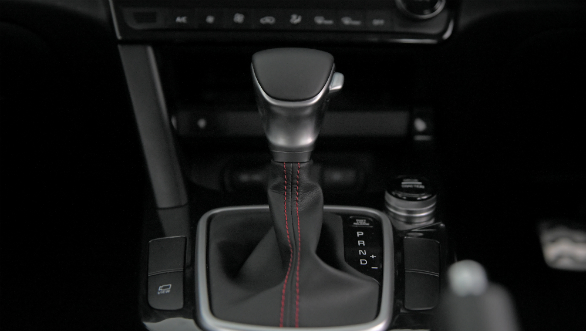
The 7-speed dual clutch automatic is smooth and shift quality is good, though I did get a mild stretchy feel, like it did not want to let go of a ratio and move on to the next. However, slot it into the S mode, which you do by simply pulling the transmission lever from 'D' towards you and you have a manual control over the gearbox. In addition, you also get a Sport mode selected from the drive selector knob (available on certain models only), which alters the shift points, steering response, and the fuelling, unleashing the full potential of the Seltos. With the drive selector, you get six driving modes: Normal, Eco, Sport for on-road driving and Sand, Snow and Mud modes for off-road driving.
Kia also claims the 1.4-litre petrol automatic is more fuel-efficient than the manual. As per ARAI figures, the 7DCT delivers 16.5kmpl with the 6-speed manual giving 16.1kmpl. Of all the engine configurations this is the least efficient engine, which kind of goes against the theory of smaller turbocharged engines being more efficient. Ironically, the 1.5-litre naturally aspirated petrol engine with the CVT automatic transmission is said to deliver 16.8kmpl and in the 6-speed manual configuration, 16.5kmpl. There is a good reason for this. The max power delivered in either engine trims is vastly different. The 'smartstream' 1.5-litre petrol is rated to just 115PS of max power with 144Nm of max torque, that's some 25PS less powerful than the turbo petrol. I'm looking forward to driving this engine configuration, it wasn't made available to us on this drive, but we should have our hands on that variant soon enough.
![]()
The other engine option of the Seltos we drove was the 1.4-litre diesel. This engine is also hugely refined, and comfortingly quiet. There is a bit of diesel clatter that invades the cabin, but typically that only happens when you rev the nuts off the SUV. If you simply use it for your daily commutes, the engine is calm and silent as it goes about its duties. This is a 1.5-litre diesel displacing 1,493cc and delivering max power of 115PS at 4,000rpm with 250 Newton metres of torque at 1,500-2,750rpm. Notice how the torque characteristics of the turbo petrol and turbo diesel seem very similar. The turbo in the diesel powertrain is a variable geometry kind and once it spools up at around 1,200rpm again, much like the turbo petrol, it can accelerate to a 100kmph in just 11.5 seconds, which is also quite impressive. Kia also claims that this engine mated to the 6-speed manual transmission provides 21kmpl, though we only got our hands on the 6-speed automatic transmission which at 18kmpl is also not bad. The onboard computers were far away from these figures though, so do wait for our road test if you are basing your buying decision on fuel economy. One observation that I had was that in S mode of the transmission, the diesel engine response and thus the performance felt just the same as in drive mode.
However, in both petrol and diesel engine configurations, what is of concern is not just their performance and linearity and smoothness, which is exemplary. It's the emission. In the petrol engine Seltos, Kia has made several improvements to the cat-con to curb emissions, while in the diesel it uses 2000 bar high pressure injection with a customised catalyst to curb the flow of pollutants.
On to the dynamics then, this is another area that is of significant importance. Since the Kia Seltos has been developed specifically for India, one of the key areas has been to get the ride quality right, given our road conditions. The independent suspension is a MacPherson set-up and it rides on 17-inch wheels and tyres. The ride quality is brilliant, the shock absorbers have been tweaked for our conditions and it quite easily irons outs any potholes or surface blemishes with ease. You just don't feel a thing inside the cabin. Handling also is composed and though there is a bit of understeer engineered in the set-up, you can sense the confidence with which the Seltos will turn into and out of corners, even when pushed hard.
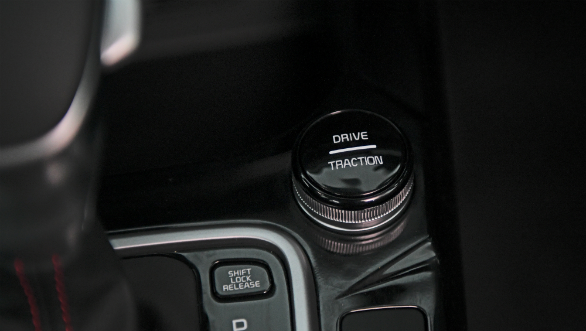
Another interesting bit of tech that has been brought into the handling equation is its off-road ability. On certain trim levels, you have the option of selectable drive modes which plays with the traction control to give it a depth and breadth of off-road ability that is impressive. On a rough hillock in Vagator, famously known as the site of the Sunburn and India Bike Week festivals, the Seltos calmly climbed up the steep slippery inclines even in harsh wet conditions with ease. The surface of this terrain was full of smooth rounded gravel, and yet there wasn't a single moment when the Seltos felt uncomfortable or out of its depth driving through this terrain. I'd certainly like to test this ability a bit more, but I'll reserve it for when we get the Seltos for a full test. The electronically assisted steering feel is neutral, it's a bit lifeless though not over-assisted and there is a marginal change in the weight and precision when you call Sport mode into play.
Certain variants of the Seltos, especially the ones with the higher trim employ a combination of disc brakes at the front and rear. 16-inch discs at the front and 14-inch at the rear with a variety of electronic assists such as ABS and EBD give it class-leading braking, according to Kia. Claimed braking distance stands at 41.9metres for a 100kmph to zero braking run. Some of the lesser variants have a disc and drum brake configuration with 9-inch drums brought into service here.
![]()
![]()
On to the more subjective elements then. I do like the design and styling of the Seltos, it's a handsome SUV, and with the LED headlamps and that unibrow like LED effect created across its hood, it does get a fair amount of attention. The Tech Line and the GT Line both look impressive, however in the GT Line trim, I do think that Kia should rethink the red pinstriping. It gets lost in certain body shades, especially on the red, while on the blue shade we drove, the contrast was disturbing. Perhaps, it would make sense to get a pinstripe in some other complementary shade instead of the red that would enhance the overall look and feel. The LED headlamps are very effective as are the driving lamps but even more impressive is the blind spot camera which comes on when you indicate left or right on the turn stalks. When you push the turn indicator stalk up to indicate a left turn, it activates the left camera and a video is thrown up on the centre of the instrument console showing the blind spot on the left side of the car. Likewise when you push the stalk down to indicate right, the camera on the right side is activated throwing up a visual of the entire right side of the Seltos. This is by far the most impressive safety feature on the Seltos and elevates the feature list significantly to its peers in the segment. There are tons of other features as well, I'm not going to go into all of them. You can read about those features here.
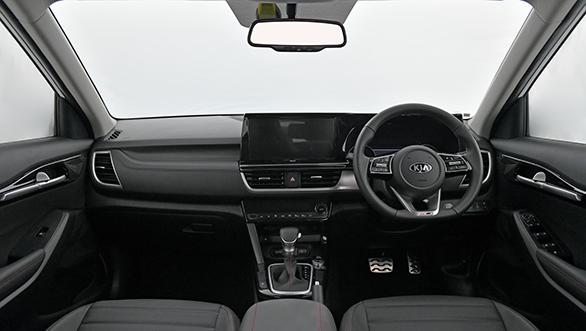
The interiors of the Seltos are well-finished and here too, multiple upholstery colours are available. Fit and finish is class-leading. There are, however, way too many screens inside. The large 10.5-inch infotainment screen takes pride of place, below that is the climate control screen. On the dashboard behind the steering wheel is the instrument cluster screen and on certain trim levels, you can also equip a Head Up Display unit. The infotainment screen is smart, intuitive and has a sharp display quality and offers a host of controls for various systems including the air purifier controls and the UVO (Your Voice) feature. UVO offers a host of safety, security and convenience features that can be operated remotely though an app on your phone. Our system did not function due to a paucity of network brought on by very bad weather and that is going to be one of its main issues. One interesting feature controlled by the infotainment screen is the settings for the HUD screen. Functions as in display height, rotation, colours and other value-based information that can be displayed on the HUD are all selected and controlled from here.
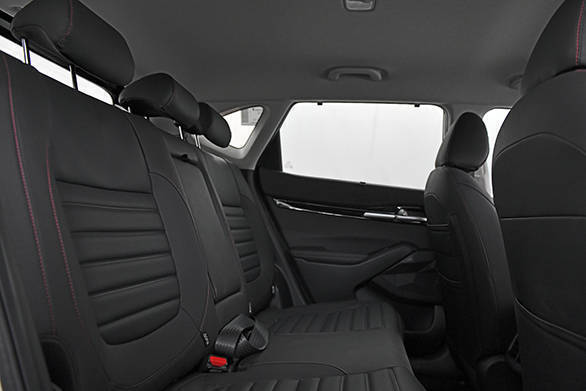
Kia has managed to scoop out a bit more shoulder room in the cabin of the Seltos, compared to the Creta. It also goes a step further by allowing a two-step recline adjustment to the rear bench. Comfort levels are excellent for this class and the cabin feels roomy with generous knee and headroom. Kia is also hinting at a better cooling efficiency for the cabin compared to its rivals. To that effect, it also integrates manual window blinds for the rear windows - which is a standout feature for this class.
What I am going to mention, however, is the trim levels. There are at the time of sale going to be 16 variants to choose from, however not all of these have been specced ideally. On the 1.4-litre turbo petrol with the automatic transmission we drove on the test, the highest variant did not offer some features like the electronically adjustable driver's seat, or the sunroof and some other convenience and luxury features were omitted as well. The variants list is anyway pretty confusing, and then having to make a choice between these variants with some features not making it to certain top variants will further confuse and aggravate buyers. Kia, however, has assured us that there is going to be a 17th variant which will have all the bells and whistles for the turbo petrol-powered Seltos. Certain curation may also be brought into effect at a slightly later date to trim the variant list and make it smaller. Dealers after all won't be able to maintain an inventory of this order.
Overall, the Seltos is a brilliant package, however, it will have a tough task going up against the MG Hector. The latter is also a brilliant package and from what we know, has been very well accepted by consumers looking for a large stylish SUV in this segment. The road ahead in the present environment is also not going to be easy, but Kia has assured us that the pricing is going to be very attractive. For those looking for a sporty-looking, spacious, feature and tech-laden SUV, the Kia Seltos could very well be the order of the day.
Starts Rs 9.95 Lakhs
1497cc
Automatic
115
250
20.8 Kmpl
Starts Rs 12.9 Lakhs
1496cc
Manual
143
250
15.8 Kmpl

